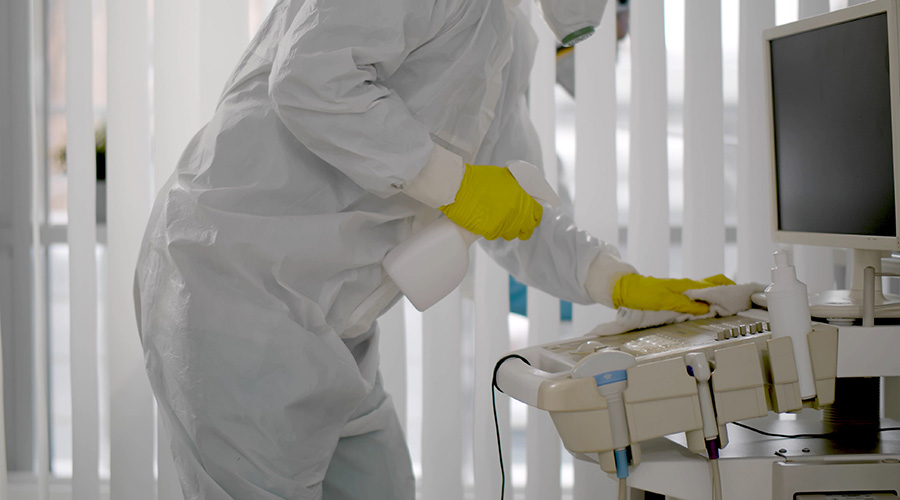In today’s regulated healthcare environments, time and money are often in short supply, and are closely monitored. The Healthcare Financial Management Association reported that in a recent study, fixed and movable equipment such as hospital beds, imaging equipment, sterilizers and surgical equipment, accounted for between 41 and 57 percent of hospital spending.
This is a significant chunk of a healthcare provider’s budget, so the decision to purchase durable medical equipment is not taken lightly. Purchases must be justified and rationalized, and all foreseeable related costs factored in. In addition, the ROI, even if not direct and in dollars, must be in benefits to the facility, such as an improvement in quality, safety or productivity.
For these reasons, it’s important to evaluate more than just pricing when purchasing expensive equipment. This is a story about the value of professional relationships – those that can save an organization time, effort, aggravation, and money, and those that do the opposite. In our case, we experienced both. In the process, we learned about some important factors that contribute to the true total cost of ownership.
Mandated change
Willis-Knighton Medical Center in Shreveport, Louisiana, is one of four hospitals in the Willis-Knighton Health System. The System serves the northwest Louisiana and bordering Arkansas and Texas region, and provides the entire continuum of patient care, with hospitals, a retirement community, and a full range of health and support services.
In 2010 we needed to replace our low-temperature liquid sterile processing systems in order to comply with new FDA requirements. We replaced them with a different type of system using a hydrogen peroxide gas plasma process. Although our department’s existing low-temperature systems, steam sterilizers and ethylene oxide (EO) sterilizers were all from one manufacturer with whom we had a longstanding relationship, Willis-Knighton decided to go with a different manufacturer.
The technology, warranty and pricing were deemed to be the best choice at the time, and the new systems held the promise of being able to reprocess a majority of our current inventory of heat-sensitive reusable medical devices. Two different models were purchased, 16 units in all, to provide validated processing of as many different devices as possible, and to meet capacity and productivity needs for all hospital departments. Each system included a one-year warranty, with any service after the warranty period subject to time and materials charges by the original equipment manufacturer (OEM).
Expectations not realized
After 20 months using these new gas plasma sterilizers, the reprocessing departments and biomed professionals who dealt with them daily were unhappy. The systems’ high sensitivity to moisture, which caused a significant number of cycle aborts and required repeating cycles, was impacting productivity. When the units were down and servicing was required, there were long wait times for OEM-provided service on the machines because there was no nearby service representative. This extensive downtime was causing issues that we could not address in-house. Ironically, at that same time we were
maintaining our older steam and EO sterilizers (which are between 12 and 20 years old- significantly longer than their expected life!) ourselves, with training, parts and occasional help from ou longstanding OEM.
Research and results
As a result of these issues, the biomed team sought a better solution. We researched and evaluated a new vaporized hydrogen peroxide (VHP) technology that was available from the OEM of our other existing systems. The evaluation included conducting a side-by- side trial with both systems, which revealed a significant difference in aborts due to excess moisture.
In addition, the new system did the work of four of the gas plasma units. The testing also led us to appreciate the quality design of the new systems, which made it easy for us to operate and maintain them ourselves. We also researched the OEM’s service programs as part of the cost-of- ownership consideration, and discovered that we could tailor a service program around our own biomed team.
Our legacy manufacturer offered training that did not require annual recertification, so that we could continue to perform regular maintenance on the new systems in-house without interruption. They also offered easy access to manuals and parts. They provided nearby service professionals (two are assigned to each hospital) who could be highly responsive for any additional service needs. This would assure maximum uptime for the VHP sterilizers.
Our testing and research provided a convincing rationale to switch low-temperature technologies, and our history with this manufacturer and its service team made that argument even stronger. As a result, the 16 systems we had recently purchased were replaced with only 8 of the new VHP sterilizers, which offered the reliability and capacity to maintain our current levels of productivity. The transition was easy. We simply expanded the ongoing collaboration.
The new VHP systems have been in use for 24 months and are highly reliable and validated for all of Willis-Knighton Medical Center’s sensitive devices. In addition, we have achieved cost savings for sterilant, utilities, maintenance supplies, service, and training.
As a result of our positive experience with the equipment and our consistently supportive service relationship, the department has purchased three more units to accommodate growing facility needs. We also hope to phase out our EO units (which require very long cycle times) and transition to processing all our sensitive devices in these VHP systems as older devices are replaced with new ones approved for processing with VHP.
Spare yourself the trouble
Reliable, effective equipment that’s properly maintained makes for optimal uptime and happy SPD and biomed staff, and more importantly, happy surgeons and clinicians. But this is not a given – achieving reliability and maximum productivity depends on whether your manufacturer’s service provider is willing to collaborate and partner with you the way you need it done. We learned a number of valuable lessons from this experience that can save other facilities unhappiness, frustration, and unnecessary expense:
° Look for OEMs that offer flexible service and training options that will allow your in-house team to save the facility time and money. Ask the following questions about the equipment manufacturer and the service contract:
• Will the contract enable maintenance by in-house biomed staff?
• Does the OEM offer biomed training at a reasonable cost?
• Will the OEM sell parts to the in-house staff directly?
• Are the OEM service experts able to respond onsite quickly if needed?
• Will OEM professionals continue to support your facility’s biomed and clinical staff, even without a “premium” service contract?
° Think ahead: as you phase out older heat-sensitive devices, you may be able to replace EO systems with these fast, reliable VHP systems for added productivity.
Capital equipment investments carry ongoing planned costs, such as consumables and utilities, and unplanned variable costs such as extensive service calls and lost productivity from too much downtime. From a service standpoint, the most valuable vendors are those who are willing to work side-by- side with us to help adjust the preventable costs downward.
Cecil (Keith) Welch is a biomedical equipment technician at Willis-Knighton Medical Center. Wesley Smith is the director of biomedical engineering for Willis Knighton Medical System
References
1. https://www.costreportdata.com/HFM-CapitalSpending_NOV09.pdf
2. http://advamed.org/res.download/688
4. http://www.steris.com/healthcare/service/inhouse.cfm

 Why Identity Governance Is Becoming a Facilities Management Issue
Why Identity Governance Is Becoming a Facilities Management Issue Habitat Health Opens South Los Angeles PACE Center
Habitat Health Opens South Los Angeles PACE Center Denton County MHMR Center Suffers a Data Breach
Denton County MHMR Center Suffers a Data Breach What Every EVS Leader Needs To Know
What Every EVS Leader Needs To Know Blackbird Health Opens New Clinic in New Jersey
Blackbird Health Opens New Clinic in New Jersey